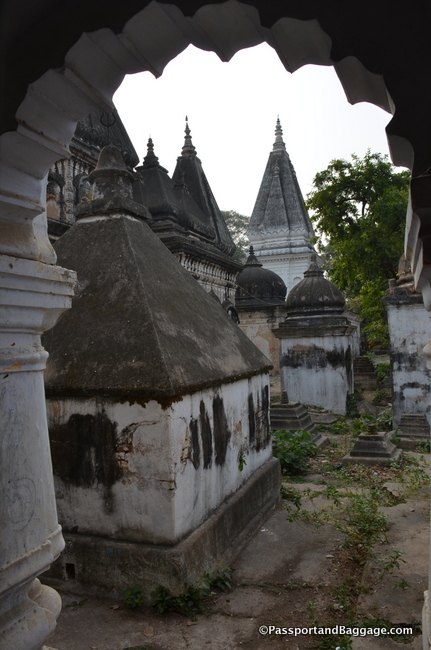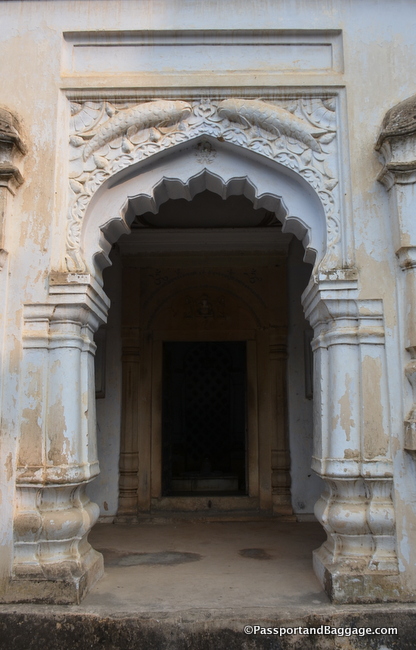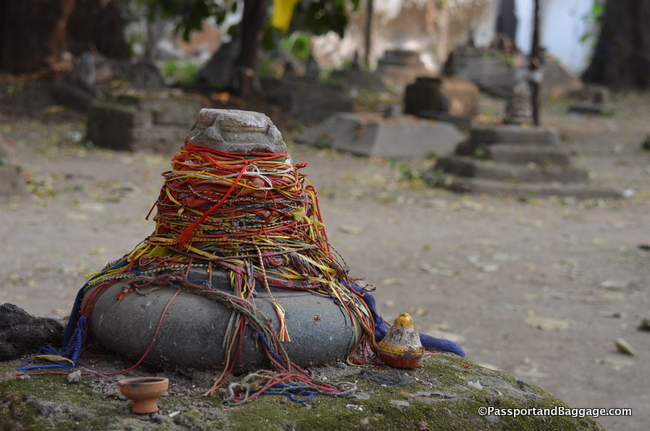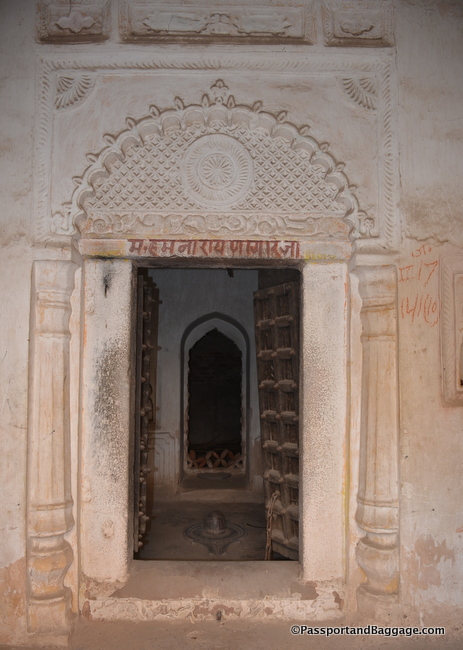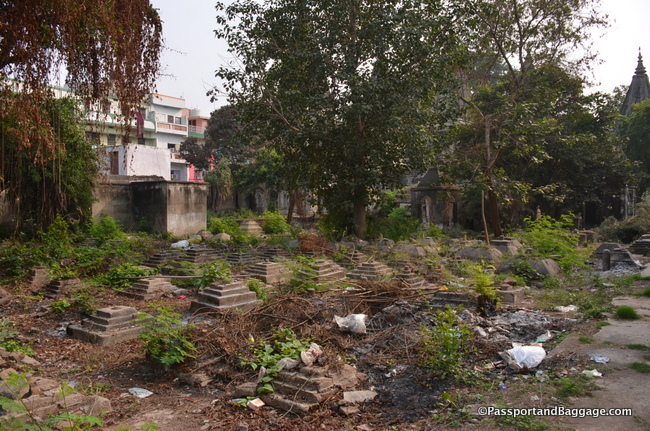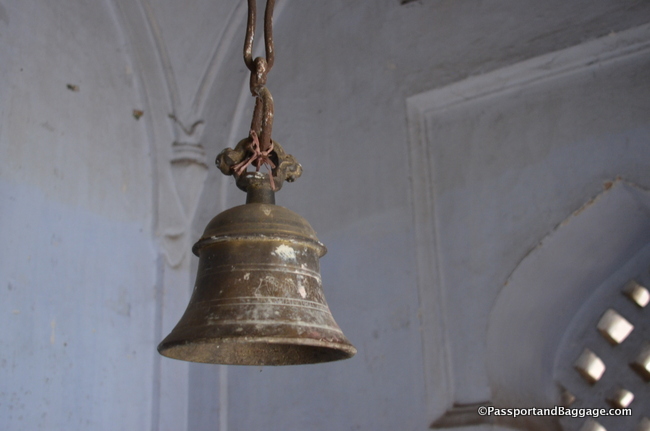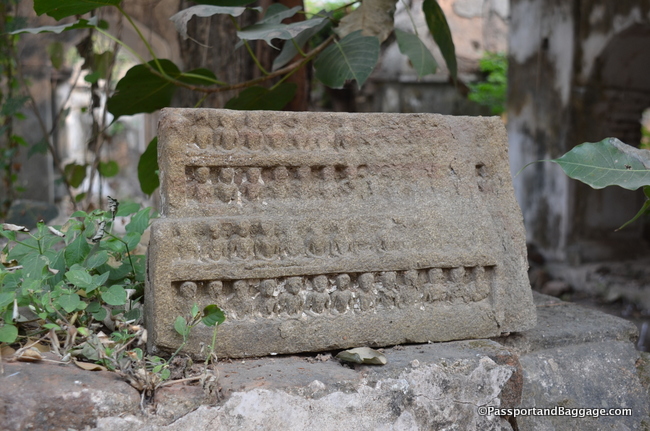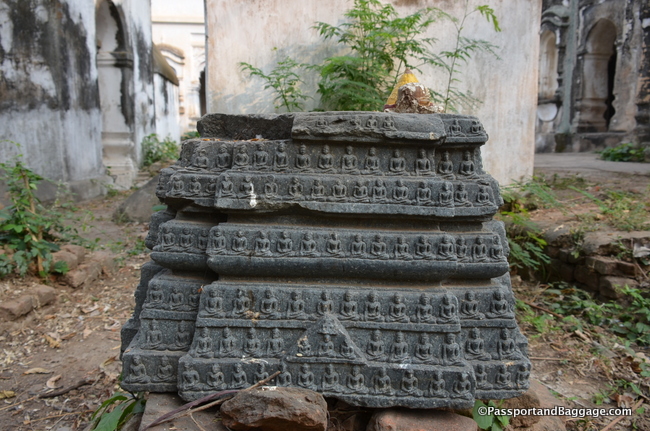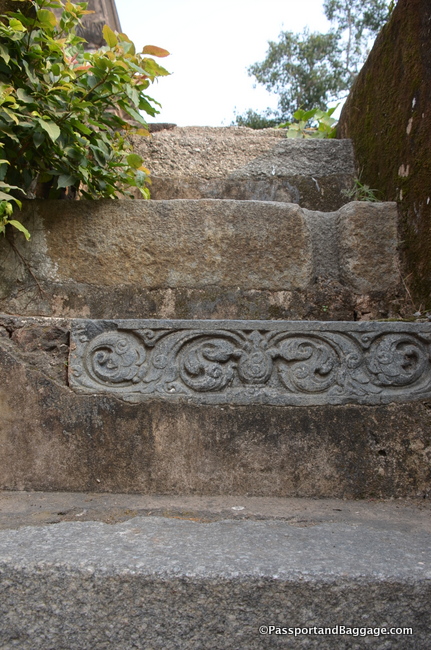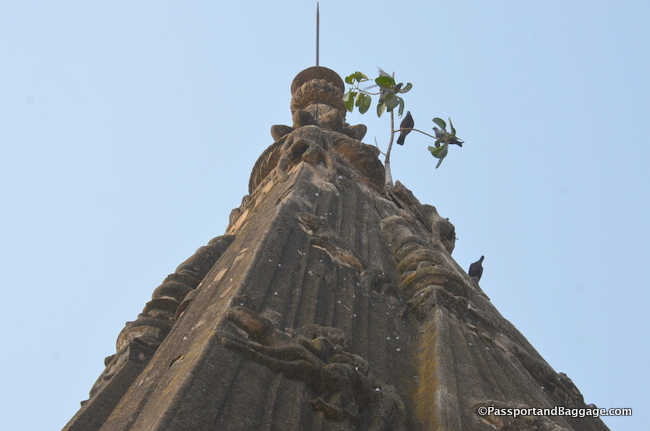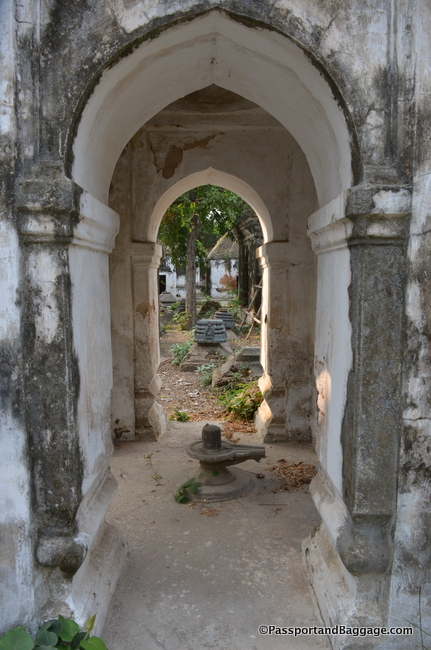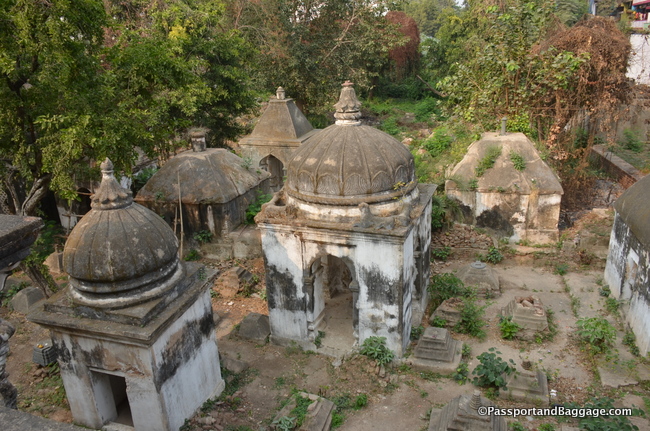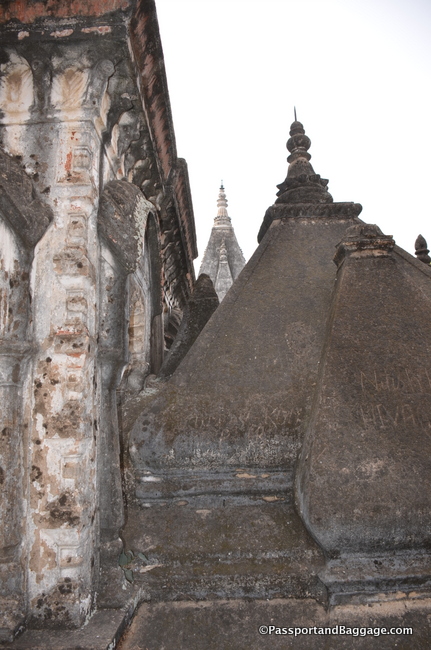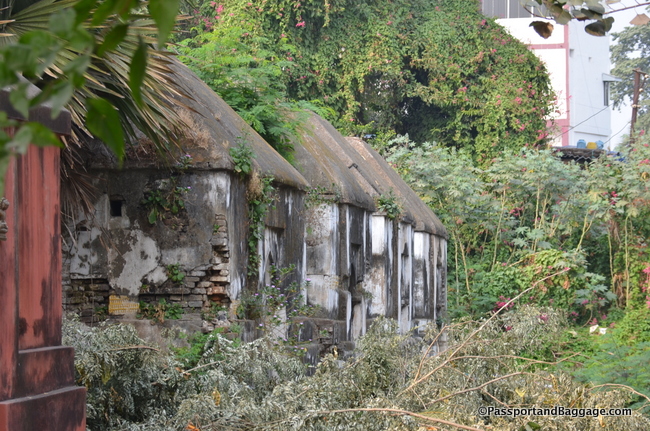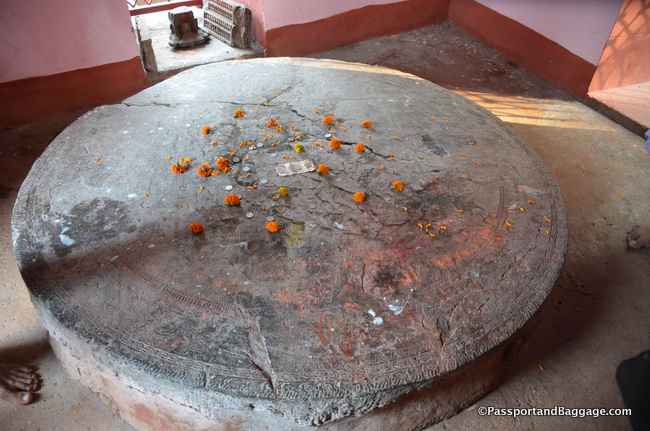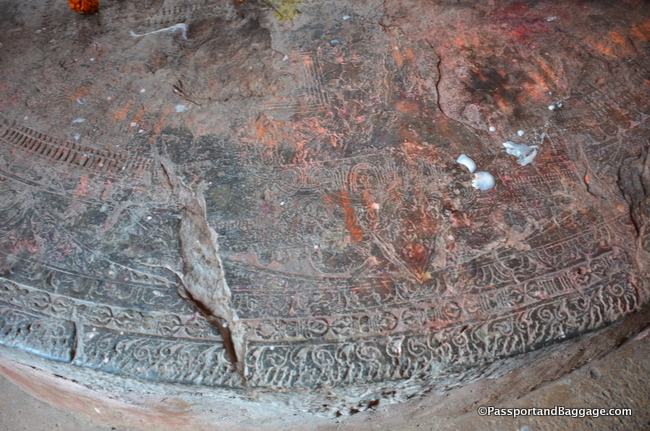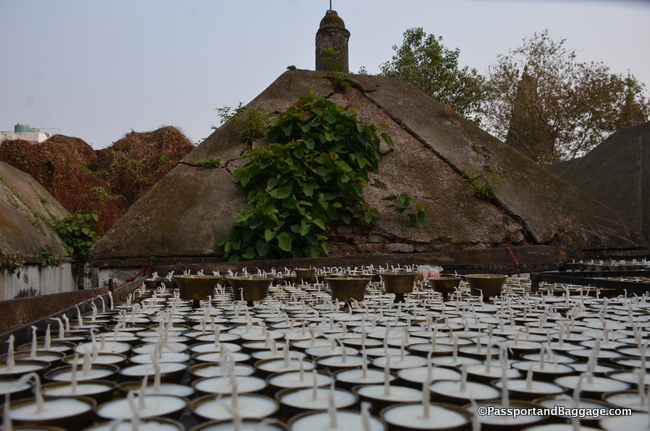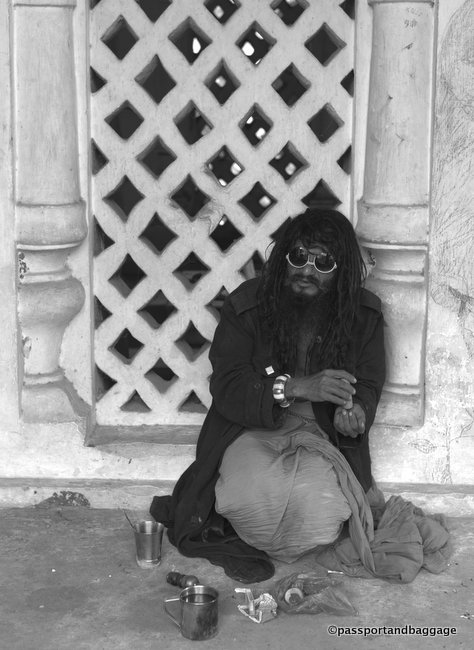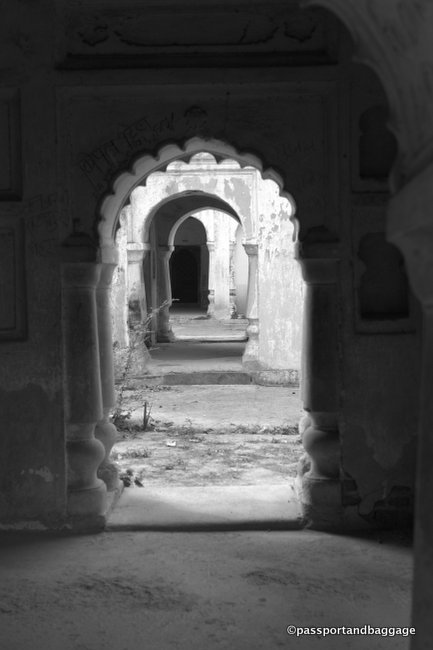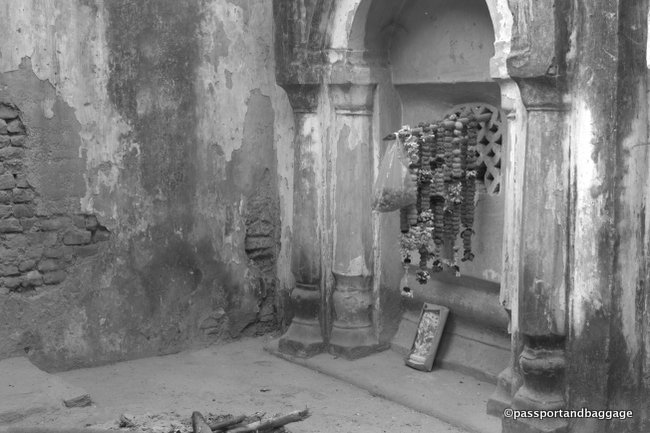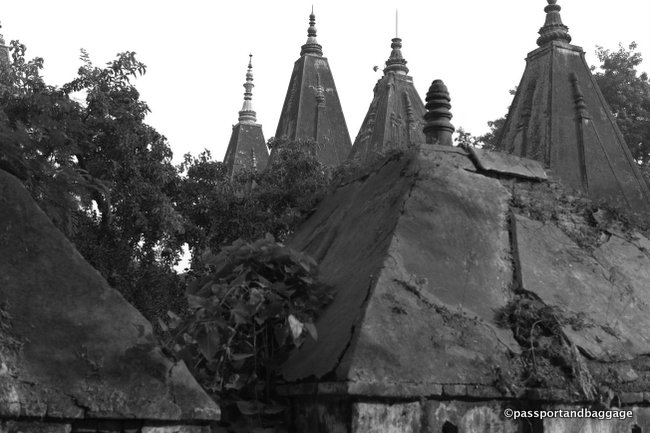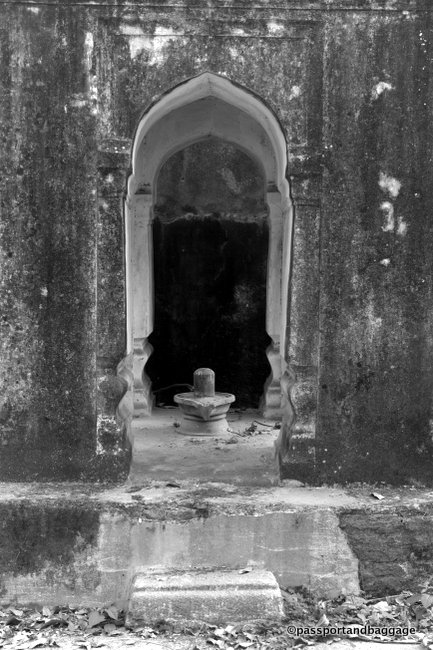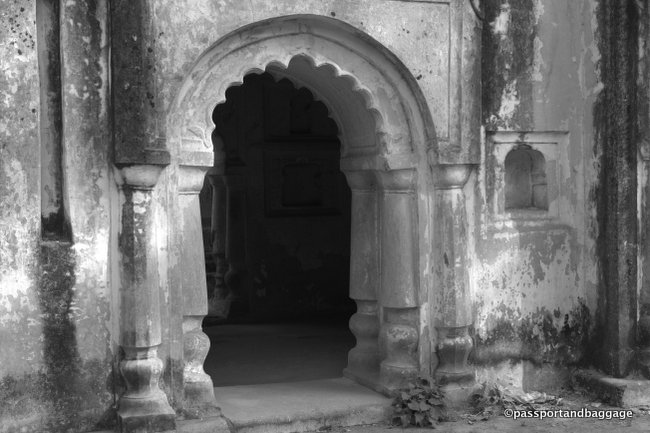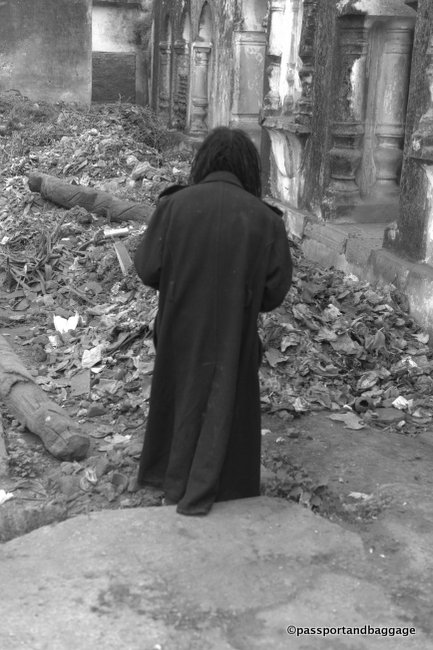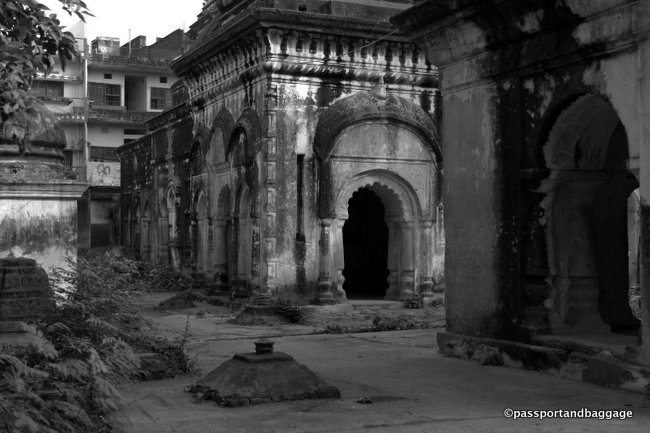December 2, 2018
Bodhgaya is one of the holiest sites in Buddhism. This is where Buddha found enlightenment under the Bodhi tree. The tree is the center of the Mahabodhi Temple, which is a UNESCO world heritage site. While it is said that over 30 million people visit the state of Bihar, and therefore, most likely, Bodhgaya, on a yearly basis, the town itself is still a backward, undeveloped community.
There are a large amount of important historical and archeological sites that lay in utter disrepair and are ignored by both the locals, tourists, and government officials.
Last year I visited such a site called The Math, which you can read about here.
This site is part of The Math and is a Samādhi for the Mahants that built and ruled The Math. You must enter the Mahabodhi Temple complex, and then double back after security to the small little trinket shop area. This is not an easy site to find.
 Samādhi is the Hindi name for a temple commemorating the dead (similar to a tomb or mausoleum), which may or may not contain the body of the deceased. Samādhi sites are often built to honor people regarded as saints or gurus.
Samādhi is the Hindi name for a temple commemorating the dead (similar to a tomb or mausoleum), which may or may not contain the body of the deceased. Samādhi sites are often built to honor people regarded as saints or gurus.
A mahant is a religious superior, in particular, the chief priest of a temple or the head of a monastery
In India, most Hindu people are cremated. Samadhi is generally reserved for very advanced souls, such as yogis and saints, who have already been “purified by the fire of yoga” or who are believed to have been in the state of samadhi at time of death. This is essentially what a westerner can understand as Nirvana. Since this person has already attained samadhi, there is no need for another life, so they are buried rather than cremated.
 Hundreds of Mahants of Bodhgaya, unlike other Hindus, are buried in cemeteries rather than cremated.
Hundreds of Mahants of Bodhgaya, unlike other Hindus, are buried in cemeteries rather than cremated.
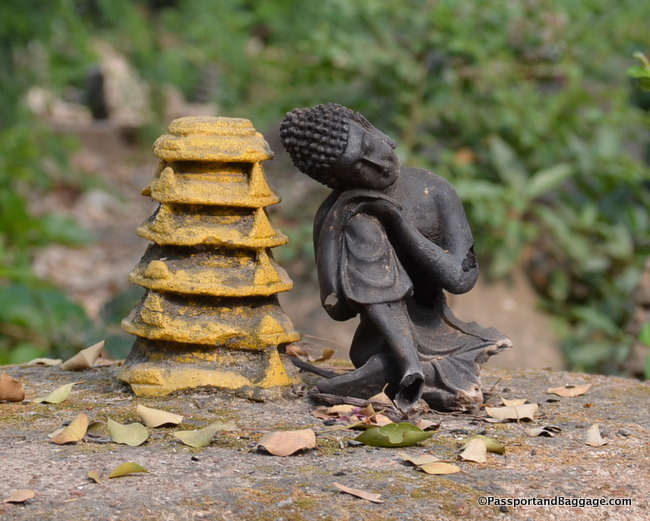
These tower like ornaments can be found on the top of many of the votive stupas This one is accompanied by a sweet tourist shop statue of Buddha
This cemetery is marked by several votive stupas often topped with lingams to indicate their religious affiliation as Shaivite monks. I was told that after cremation the Mahants are placed in the lotus position and placed inside of the stupas.
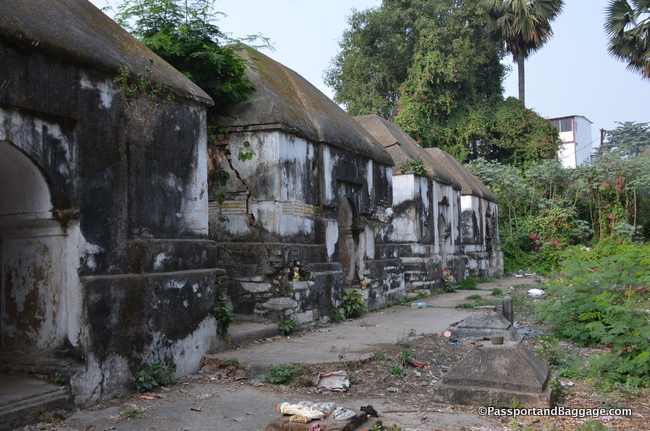 It is assumed the Samadhi was constructed in the early seventeenth century due to a report by one of the earlier, and most well-known archeologist to visit India, Alexander Cunningham.
It is assumed the Samadhi was constructed in the early seventeenth century due to a report by one of the earlier, and most well-known archeologist to visit India, Alexander Cunningham.
In 1861 Cunningham said:
“Close to the Great temple, there is a small plain Samadhi or cenotaph, over the remains of the earliest Brahmanical Mahant. …Ghamandi Giri, the founder of the Math, was buried in front of the Mahabodhi Temple, and a shrine or Samadhi was erected over the spot, which still exists. To the east of the Mahabodhi temple is the Math of the Mahants which is still under occupation.”
Raja Rajendralal Mitra ( 1822 – 1891) said the following in 1878.
For Mahants the (funerary) temple is large and elaborately ornamented. It would seem that even for neophytes a lingam was held essential: but in the majority of cases, its place was supplied by a miniature votive stupa picked up from the Buddhist ruins in the neighborhood.”
Mitra was the first modern Indologist of Indian origin and was a pioneering figure in the Bengal Renaissance. He was also a noted antiquarian and the first scientific historiographer from Bengal.
In David Geary’s The Rebirth of Bodh Gaya: Buddhism and the Making of a World Heritage Site, published in 2017, he says:
“…many of the Math’s properties and former kutcheries (farmhouses) have been demolished by Maoist rebels and/or are fast deteriorating. One example is the Math’s Samadhi burial ground…Wandering through the graveyard filled with Shiva lingams and miniature votive stupas one afternoon, I was struck by the colorful pastel images of various deities such as Shiva, Kali, and Ganesh that covered the walls of the large, impressive tombs of former mahants. Except for these ghostly images, there was no one to be found. The owner of a chai stall nearby explained to me that few people visit the Samadhi graveyard or other Math properties, save the occasional wandering sadhu. Instead, they have become popular haunts for youth as a place to consume alcohol and smoke ganja (marijuana) through the night without fear of public reprisal.”
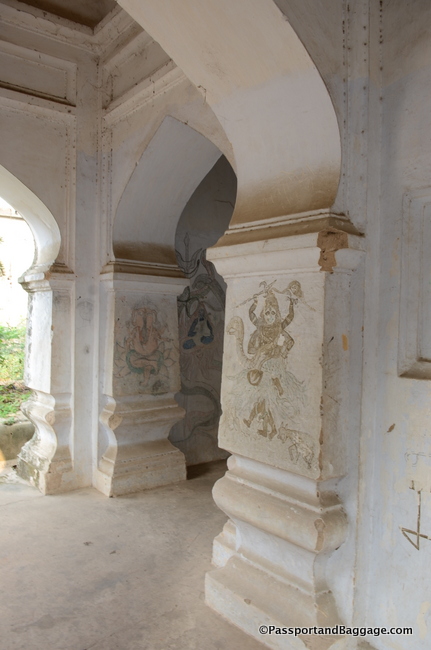
The designs David Geary spoke of, I was told these were done by a Tibetan monk, which makes no sense, but the kid who told me probably thought it sounded good.
Today you can not get into the samādhi without going through the security system of the Mahabodhi Temple. There once was access from a side street, but that is now walled off. As you can see by the photos the site is in terrible shape.
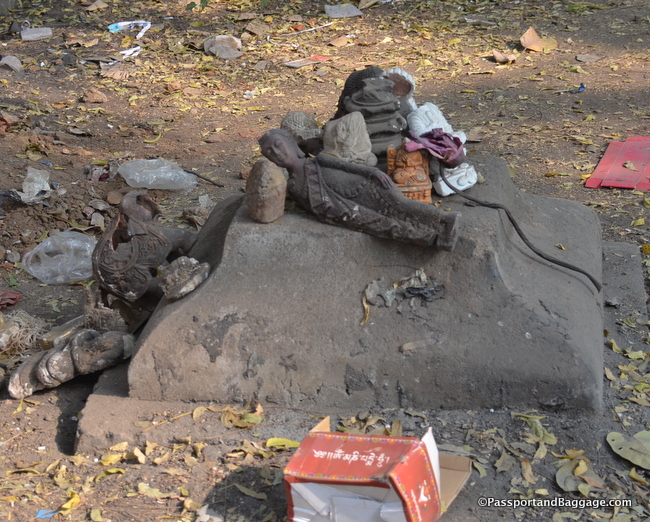
Trash is strewn throughout the property, but it must be noted that trash is strewn throughout all of India
![linga or Shiva linga, is an abstract or aniconic representation of the Hindu deity Shiva in Shaivism.[1] It is a votary symbol revered in temples, smaller shrines, or as self-manifested natural objects.[2][3] The lingam is often represented within a lipped, disc-shaped platform called a yoni that symbolizes goddess Shakti](https://passportandbaggage.com/wp-content/uploads/2018/12/DSC_0544.jpg)
A linga or Shiva lingam is an abstract representation of the Hindu deity Shiva in Shaivism. It is a votary symbol and is often represented within a lipped, disc-shaped platform called a yoni that symbolizes goddess Shakti.

The buildings are made of brick and then covered over in cement. You can see how the round columns were formed by using round bricks.
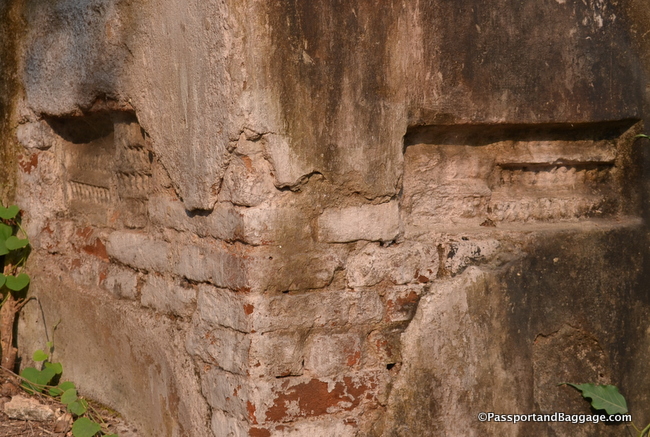 Inserted into this particular building are small squares of continuous sitting Buddhas. I first saw these in The Math, and have since seen them in museums and all over Bodhgaya in ruins. It is an obvious indication of one society utilizing the ruins of another to build anew.
Inserted into this particular building are small squares of continuous sitting Buddhas. I first saw these in The Math, and have since seen them in museums and all over Bodhgaya in ruins. It is an obvious indication of one society utilizing the ruins of another to build anew.
More appropriation…
*
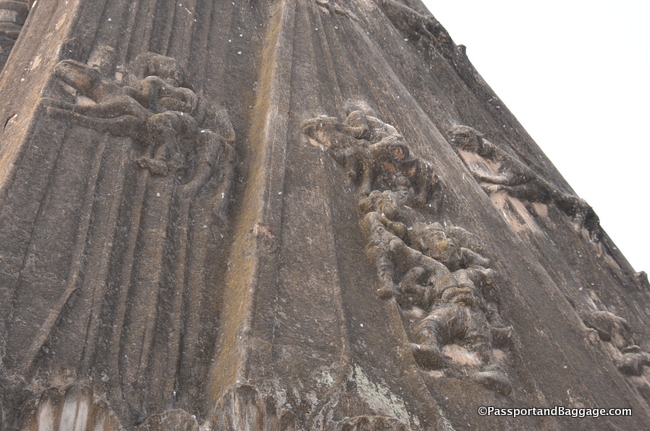
Only one of the structures had carvings on the roof, it was difficult to see exactly what they were, but I believe I made out Hanuman.
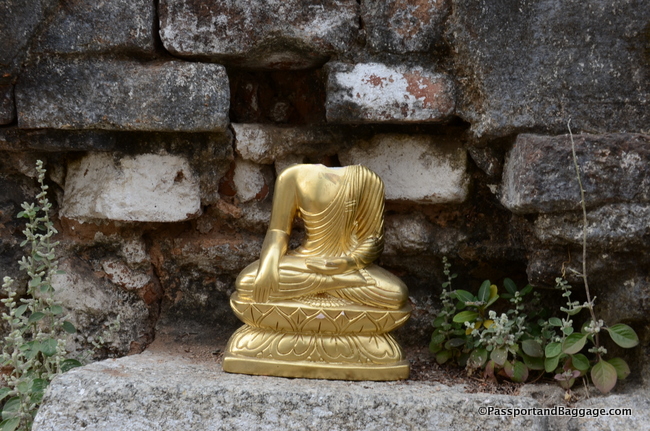
Some people still bring small tokens into the samadhi, this one appears to have had a small accident.
Here are some just random shots of an amazing out of the way spot in the hustle of the Mahabodhi Temple.
*
Once you leave the samadhi you can turn to the right and find a small Saraswati Temple with a huge stone. I was told by a boy that was hanging around that it was a Kalachakra Wheel. Kalachakra means Wheel of Time and is the name of one of the Buddhist deities which represent particular aspects of the Enlightened Mind. However, I was later told that it is not, but that it is 800 years old. It is Tibetan, so this makes me really wonder how it got here, in a Hindi Temple surrounded by a Samadhi in India.
 Saraswati is the Hindu goddess of knowledge, music, art, wisdom, and learning. She is a part of the trinity of Saraswati, Lakshmi and Parvati. All the three forms help the trinity of Brahma, Vishnuand Shiva to create, maintain and regenerate-recycle the Universe respectively.
Saraswati is the Hindu goddess of knowledge, music, art, wisdom, and learning. She is a part of the trinity of Saraswati, Lakshmi and Parvati. All the three forms help the trinity of Brahma, Vishnuand Shiva to create, maintain and regenerate-recycle the Universe respectively.
If you don’t want to buy the trinkets found along the alley, there are prayer candles to light as well.
December 10, 2018
I went back to the cemetery several days later and much had changed. There is now a Tibetan Buddhist monk helping to clean the area up. He explained to me that it was a very important Buddhist location as well since it is said that Mahakala resides here. Mahakala is a deity common to Hinduism, Buddhism, and Sikhism. Mahakala also appears as a protector deity known as Dharmapala in Vajrayana Buddhism, particularly in most Tibetan traditions.
I wanted to shoot the entire place again in Black and White, so I quietly wandered around when I met a sadhu. The sadhu explained that the drawings, mentioned above, that are on the walls of one of the temples, were done by a prior sadhu who lived on the grounds for two years, and whose body has now passed. A sadhu is a religious ascetic, mendicant (monk) or any holy person in Hinduism and Jainism who has renounced the worldly life.
Here are some of the black and white photos I shot, it gives one a completely different feeling for the place.
